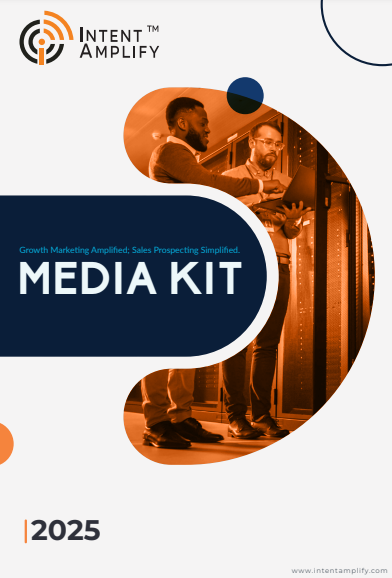
The 3 R’s of ABM for Manufacturers and How to Track Them
- Last updated on: September 30, 2025
Account-Based Marketing (ABM) is a growth engine that has made a significant impact in the area of manufacturing. In such a world that is defined by long sales cycles, the involvement of various buying committees, and global competition, the use of traditional lead generation tactics alone will not be sufficient. Essentially, manufacturers nowadays require precision, alignment, and measurable impact.
This is exactly the point where the Three Rs of ABM – Reach, Relationships, and Revenue come in. These pillars provide manufacturers with a clear framework to focus efforts, prioritise high-value accounts, and prove ROI across sales and marketing.
However, the first step of the challenge is not understanding the Three Rs. The biggest difficulty lies in performance tracking with meaningful metrics. Without measurement, ABM turns into guessing. But with the right KPIs, manufacturers can make it clear that their efforts impact the pipeline, customer engagement, and revenue growth.
In this article, we are going to discuss each “R” in detail, look at how manufacturers can be a step ahead by aligning their strategy with execution, and share some practical ways to measure success. You will be able to scale ABM programs that win enterprise deals and accelerate growth after reading the story.
R1: Reach – Targeting the Right Accounts
The first step to ABM success for manufacturers is to guarantee that you are targeting the right accounts. ABM, unlike broad lead generation, concentrates resources on those targets that have the highest value and correspond to your Ideal Customer Profile (ICP).
The job of reach is not to determine the number of contacts but the exactness of the contacts. Manufacturing companies are typically engaged in selling to big companies that have long purchasing process and a large number of decision-makers. Hence, it is necessary that targeting should not only be based on firmographics but should also comprise technographics, intent signals, and buying committee insights. According to Gartner, measuring the effectiveness of ABM programs is a serious hurdle for 42% of businesses.
Suppose you are dealing with “automotive suppliers” as a broad category; in that case, you will narrow your target to Tier-1 automotive suppliers that are investing in Industry 4.0 technologies instead. Decision-makers will thus identify your campaigns at such a level, and in addition, the money you spend on them will not be wasted.
Tracking Reach
To properly quantify reach, manufacturers should put their emphasis on:
- Account coverage: Are you reaching all the stakeholders across the targeted accounts?
- Account engagement: What accounts are consuming content, attending webinars, or responding to outreach?
- Share of voice: How is your brand visible as compared to your competitors in the key accounts?
Marketing teams can monitor these indicators with the help of ABM platforms, CRM dashboards, and intent data providers. The aim is to make sure that resources are directed towards the accounts with the highest potential.
R2: Relationships – Deepening Stakeholder Connections
In ABM, relationships are the bridge between visibility and revenue. For manufacturers, getting a deal is usually a matter of trust, the technical part being done in line with the customer, and having influence over multiple stakeholders. Good relationships change recognition into engagement, which further leads to partnering. 80% of marketers say ABM delivers higher ROI than other marketing initiatives, highlighting the direct impact of relationship-focused strategies on revenue growth.
Why are Relationships Important in Manufacturing ABM?
Manufacturers have to deal with long sales cycles and complex buying committees, along with technical evaluations. It is not just about encountering accounts; you need to establish trust in operations, procurement, engineering, IT, and executive leadership. The harder the connections, the more likely probability of opportunities advancing.
Key Metrics to Track Relationships
Manufacturers must concentrate on assessing the quality as well as the scope of engagement rather than just counting the leads.
1. Contacts engaged per account: Track how many stakeholders from different functions are interacting with your team. A higher number means a stronger influence across the buying group.
2. Depth of engagement: Care for what pace of interactions – meetings, demos, and repeat content consumption rather than one-time clicks you provide.
3. Executive engagement: Tell how often you get a chance to talk to C-suite or senior decision-makers. The road to budget holders only leads to strategic alignment.
4. Multi-threading: Find out if your relationships reach beyond just one champion. If you talk to operations, engineering, and procurement, then they, rather, lose the risk of momentum stop to you.
5. Engagement velocity: Show how soon new contacts move from first interaction to a qualified meeting. The quicker progression shows that your message is hitting home.
6. Relationship health: Mix together frequency, sentiment, and momentum of interactions into one score. Now, this helps you to find not-so-active accounts.
7. Advocacy and referrals: Record the moments when contacts recommend you to their friends, the talks widen to other departments, or they agree to be your reference. The latter is the most trustworthy signal you will ever get.
How to Strengthen and Measure Relationships?
Start by mapping out all key interactions from webinars and demos to executive briefings and assigning value based on impact. Use ABM platforms and CRM integrations to capture these interactions at the account level, not just the contact level. Segment your accounts by priority tiers so you can devote more resources to the ones with the greatest potential. Finally, benchmark current relationships against past successful accounts to set performance standards.
Example Scenario
Imagine your manufacturing technology company is targeting Tier-1 aerospace suppliers. In Account A, you’ve only engaged one director in engineering, with minimal content activity. In Account B, you’ve engaged six contacts across engineering, IT, and operations, hosted two executive briefings, and seen repeated downloads of case studies. Clearly, Account B has stronger relationship momentum and should receive greater focus. If those contacts begin introducing you to procurement or quality teams, you know the relationship is moving from transactional to strategic.
R3: Revenue – Turning Engagement into Business Impact
At the end of the ABM journey, the revenue impact is the only thing that matters. Manufacturers are buyers in competitive, high-investment markets where they can’t just take your word for it – they need to see what the return on investment will be first. Thus, revenue becomes the most crucial R, as it gives the green light to your reach and relationship initiatives. 84% of companies see pipeline growth as a result of their ABM strategies.
ABM is not only about setting up meetings or creating interest in the target but also about promoting the pipeline and converting the right accounts into the most profitable customers. In other words, it is about checking up on which of the two: higher or lower deal sizes, shorter or longer cycles, and better or worse win rates is influenced by ABM.
Why Revenue is Central to ABM Success ?
- It confirms the harmony between business and marketing/ sales through results that can be measured.
- It is an indicator of whether ABM can move beyond pilot projects towards repeatable growth and consequently be scalable.
- It allows even more leadership support and the securing of further funding.
- It reveals which tactics lead to the highest returns when put into practice.
Key Metrics to Track Revenue
Manufacturers need to give special attention to these metrics if they want to have a true picture of revenue outcomes:
1. Pipeline influence: Account for the total value of new opportunities that use ABM campaigns as a lever to gain traction. Here is where you can tell if your programs are achieving their purpose by getting hold of and making an impact on high-value deals.
2. Pipeline conversion rate: Calculate the percentage of opportunities that, with ABM influence, turn into closed-won. The higher the rates of conversion, the more it will be evident that sales outcomes improve as a result of ABM implementation.
3. Deal velocity: Determine how fast the deal goes from creation to closing. ABM, by letting you address the suitable profiles first, should be able to cut down cycle times.
4. Average deal size: Look at the difference in contract value between accounts targeted by ABM and those that are not. The aspect of deal sizes becoming larger is a confirmation of the fact that ABM can focus on enterprise opportunities.
5. Customer acquisition cost efficiency: Measure the revenue generated over the amount of money spent on ABM. A ratio that is in good shape is an indication of ABM providing sustainable growth.
6. Expansion and renewal revenue: Don’t just focus on new deals, look also at the shares of upsells, cross-sells, and renewals that have been impacted by ABM. This shows the value of the account over the long run.
Revenue by account tier: Study the differences in revenue among the three types of account groups, i.e. Tier 1, Tier 2, and Tier 3. Such distribution is the key to the future allocation of resources in areas where you are most likely to get the highest ROI.
How Manufacturers Can Track Revenue?
- Put ABM indexes in your CRM to get data on campaign influence and closed-win deals.
- Show the performance of ABM accounts against the performance of non-ABM accounts to demonstrate the growth of deal size, velocity, and win rates.
- Apply multi-touch attribution models so as to assign the ABM credit at each stage of the buyer journey.
- Link ABM quantification with plans for customer retention and expansion..
- Create executive dashboards to depict at the moment, the contribution made by ABM towards pipeline and revenue growth.
Example Scenario
ABM campaigns are the tool with which a global industrial automation company captures Tier-1 energy companies. $75M in ABM-influenced pipeline, reduction of deal cycles by 70 days, and average deal size almost 60% larger than non-ABM accounts are the advantages that the company reaps within one year. What’s more, for two accounts, product line expansions took place during the six months after collaborations. Without a doubt, these results demonstrate the ability of ABM to provide a tangible economic impact.
Bringing It All Together – The Three Rs in Action
For manufacturers, ABM isn’t about more leads – it’s about the right impact at the right accounts. The Three Rs – Reach, Relationships, and Revenue – form a practical framework for building and measuring account-based strategies.
- Reach ensures you target the accounts and stakeholders that matter most, not just anyone in the market.
- Relationships transform initial awareness into trust, credibility, and multi-threaded influence across buying groups.
- Revenue validates your efforts, proving measurable business outcomes and securing leadership confidence in ABM investment.
When these three pillars align, manufacturers can accelerate pipeline, shorten deal cycles, and win larger, more strategic contracts.
FAQs
1. What are the three Rs of ABM for manufacturers?
Reach, Relationships, and Revenue are the three pillars that guide manufacturers in targeting, engaging, and driving measurable business impact.
2. How is Reach different from traditional lead generation?
Reach focuses on high-value, ideal accounts using precision data, while lead generation often targets volume over quality.
3. Why are relationships critical in ABM for manufacturing?
Strong relationships build trust across multiple stakeholders, ensuring buy-in and smoother progression through complex sales cycles.
4. How do you measure relationships in ABM?
Track engaged contacts, executive interactions, multi-threaded influence, and advocacy signals to assess relationship depth.
5. What revenue metrics best demonstrate ABM success?
Pipeline influenced, conversion rates, deal velocity, and expansion revenue prove ABM’s direct financial impact.




